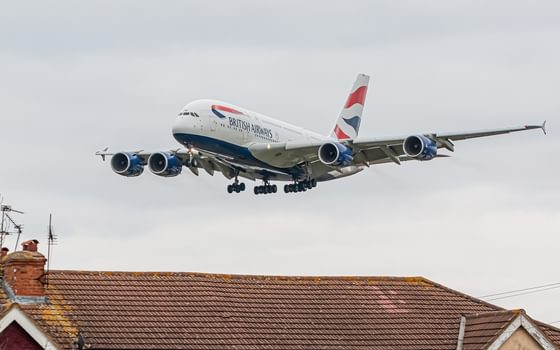The economics of air transport in Europe
Part one: Air transport and growth
13 November 2025
When addressing matters affecting air transport growth, such as airport expansion and aviation taxation, policymakers frequently frame decisions as a trade-off between economic gains and environmental losses. Within this paradigm, the claimed presence of an economic benefit is often either assumed or only lightly interrogated.
This study is the first of three reports taking a deeper look at the economic impacts of air transport growth in Europe, exploring respectively:
- Does air transport growth have an impact on economic activity, and if so, is that impact positive, and where, when, and why does it occur?
- Are the economic impacts of air transport usefully and fairly distributed between regions and social groups?
- Are claimed economic impacts robust when considering climate and environmental damages and ecosystem tipping point risks, and are there lower-impact alternatives?
Through statistical analysis performed on 274 sub-regions of Europe, following the peer-reviewed methodology set out in Pot and Koster (2022), this report shows that the net impact of air transport growth on the wider economy varies greatly across Europe. While our analysis suggests the headline correlation between air transport and gross domestic product (GDP) growth presented in industry-funded research is generally robust at the pan-European level, the matter of causation has been under-evaluated, and the importance of variation in place and time understated.
Our analysis suggests that a causal relationship in which air connectivity growth drives GDP per capita growth can only be statistically supported in 37% (101) of European regions, many of which are located in Eastern Europe. In 53% (145) of European regions, we found a causal relationship in which income growth drives air transport demand (principally outbound tourism). These regions dominate much of northern and western Europe. There was a small amount of overlap between these two types of causality (12% of regions), leaving 22% of regions with no causality identified.
Looking across Europe, we found more regions where air transport demand appeared to be a response to increasing GDP per capita than we found where air connectivity appeared to drive growth. We additionally identified a subset (11%) of regions where the correlation between the two indicators was negative. We identified these findings without considering the GDP losses air transport creates through its impact on the climate.
Our findings have important implications for contemporary policy decisions. Policymakers cannot rely either on “assumed” growth benefits, or benefits calculated using relationships based on outdated or regionally non-specific analyses.
To highlight some key contextual issues that policymakers working on air transport strategy should be considering, we used a statistical clustering method to characterise Europe’s regions by the type of relationship between air connectivity and the economy that they present. This led to the creation of four distinct clusters.
Through our clustering analysis, we highlight that a key factor for consideration, and a contributor to the decline in air transport’s role as a driver of growth, is the decline in business-purposes air travel. Only nations dominated by our Cluster 1‑type regions have shown any business air passenger growth in the past 13 years. Elsewhere, we see signs of saturation in the business market. This is not to say that there is no air travel demand, but that it principally serves the leisure market.
The decline in air connectivity as a driver of growth is strongest in those regions where business air travel demand has declined, and where tourism spending is in a net deficit (ie a region sends more tourism than it receives) — mainly Clusters 3 and 4 in our typology. These regions are particularly common in Belgium, the Netherlands, the UK, and Germany. Here, already high-income, high-connectivity places are delivering diminishing, and potentially even negative returns to air connectivity growth.
In tourism receiving areas, we also see stagnating business air travel, but air connectivity has a more nuanced relationship with economic growth. In this group — our Cluster 2 — which dominates in countries like Spain, Italy, and Portugal, tourism is a source of inbound spending flows. Most (59%) see a causal connection from air transport to growth, but the value created is moderated by several factors, such as the relative strength of land-transport routes and domestic tourism, which can act as lower-environmental-impact substitutes for air transport; the duration of visitor stay, which has been in decline in many receiving nations; and the quality of tourism infrastructure, which has been undermined by the rise of informal accommodation.
Our findings support the conclusion drawn by a report for the European Commission: that increased taxation of air transport would have a negligible impact on wider economic growth in most parts of Europe. This could potentially rise to a positive impact, were climate benefits included, and tax revenues raised invested well.
Given the significant regional variation in the impact of policies affecting air transport growth, policymakers should give careful consideration to broader tourism-related industrial strategy. Done well, this could contribute to reducing income, wealth, and environmental costs and inequities ingrained in European tourism and help address the concerns currently driving anti-tourism protests across the continent. These, and other issues, will be considered in the second report in this series.
A full methodology paper providing a more detailed description of the statistical methods applied in the report is available here.
Image: Pressmaster (shutterstock.com)
Campaigns Stop airport expansions
Topics Environment







